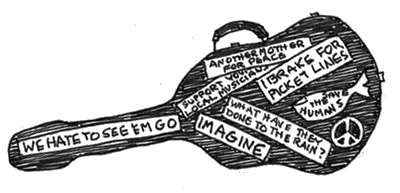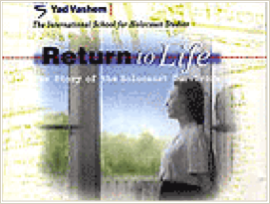


We went to see The Counterfeiters Friday
night. Good film, based on a true story. The Nazis wanted to
counterfeit Allied currencies to undermine their economies, so they
combed the concentration camps and found printers, engravers, artists,
bankers (for quality control), paper makers, and a master counterfeiter
who was the center of the film. So you had criminals and bankers (there
is a difference, at least in the minds of the bankers) forced to work
together to save their skins and faced with the moral dilemma: do they
risk their own lives and the lives of their colleagues to try to
sabotage this effort?
When
I was in Syracuse in January after the People’s Music Network
gathering, my friend Mara took me to two workshops on the Holocaust, one
for her fellow professors and one for high school teachers. The
presenter was Ephriam Kaye of Yad Vashem, the Holocaust Memorial Museum in Israel. He has been a high school teacher himself and introduced a curriculum he and the museum developed.
Kaye
showed some of the powerful filmed testimonies of survivors which are
included in the curriculum and also on their website. Since the German
government made some effort to destroy evidence of the Holocaust, how do we
know that it happened? The gas chambers were destroyed, but hundreds of
the working plans for their construction were found. When the firing
squads went into towns and villages, the bodies were burned but the
squads kept careful records of who they killed: predominantly Jews, but
also members of the resistance, Communists, thieves, Gypsies, including
Gypsy and Jewish children. Some of these records have been found, and
letters home from members of those squads. As I watched, I was conscious
that if I had been born in Europe instead of the United States, I and
my family probably would not have survived--one parent Jewish, both
parents Communists, and me a useless child.
The
advice on teaching the Holocaust: Don’t just teach the camps and
killing in isolation. Teach the Jewish culture thriving before the Nazis
rose to power, teach the resistance, teach the resilience. Teach the
value of what was destroyed, not just the destruction.
What
I didn’t know was that the people who were doing the killing were never
“just following orders.” If they refused to participate, they were not
punished (except perhaps by being sent to the front, where life was
indeed more risky), they just weren’t promoted. Their acts were supposed
to be erased from history, so of course the government would want
people doing them who believed in what they were doing.
In
the United States, we also need to teach about our country’s complicity
in the Holocaust, refusing entry to most refugees. And if we think such
a thing could never happen here, we need to remember the “relocation
camps” for Japanese-Americans during that same period. I was aware of
this when it was happening—my family bought our first piano from a
Japanese-American family that had to sell or store or give away
everything that wouldn’t fit into one suitcase per family member. While
there was no plan to kill the people relocated, it is true that many
died from unnecessarily harsh conditions.
What I didn’t know until I read Double Victory: A Multicultural History Of America in World War II
by Ronald Tataki was that the Territory of Hawaii refused to relocate
its Japanese-American population and explained that this was not despite the bombing of Pearl Harbor but because
of it. The officials said that they needed to rebuild after the bombing
and the carpenters were all Japanese-American. Well, yes, but if they
had been as racially prejudiced as their mainland counterparts, they
might have been willing to be just that counterproductive.
©2008 by Nancy Schimmel

Tuesday, March 11, 2008


TEACHING THE HOLOCAUST






